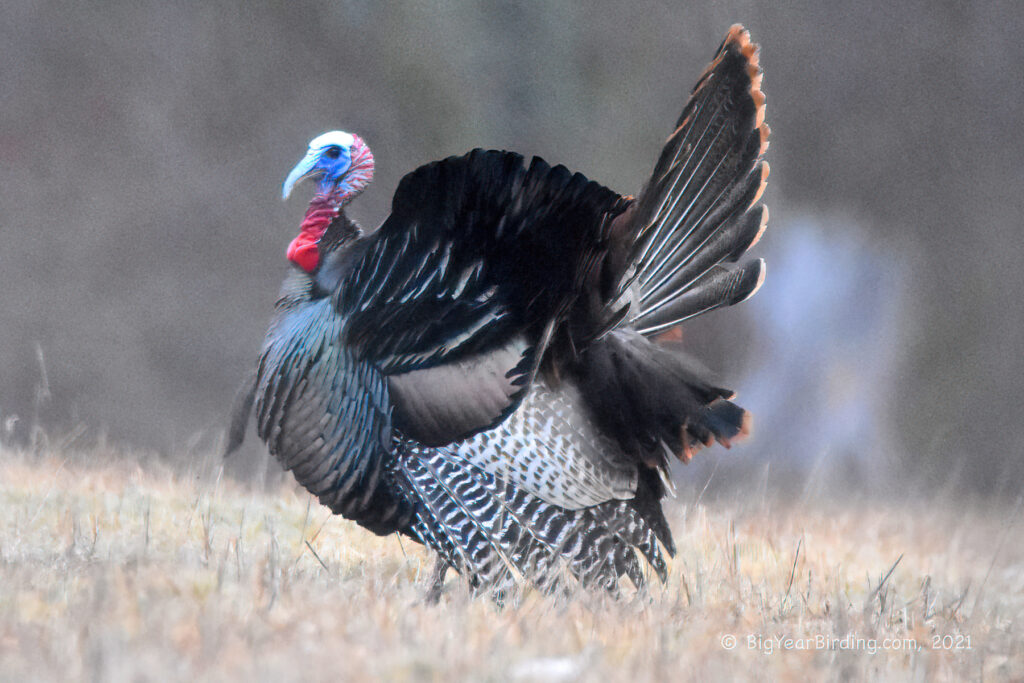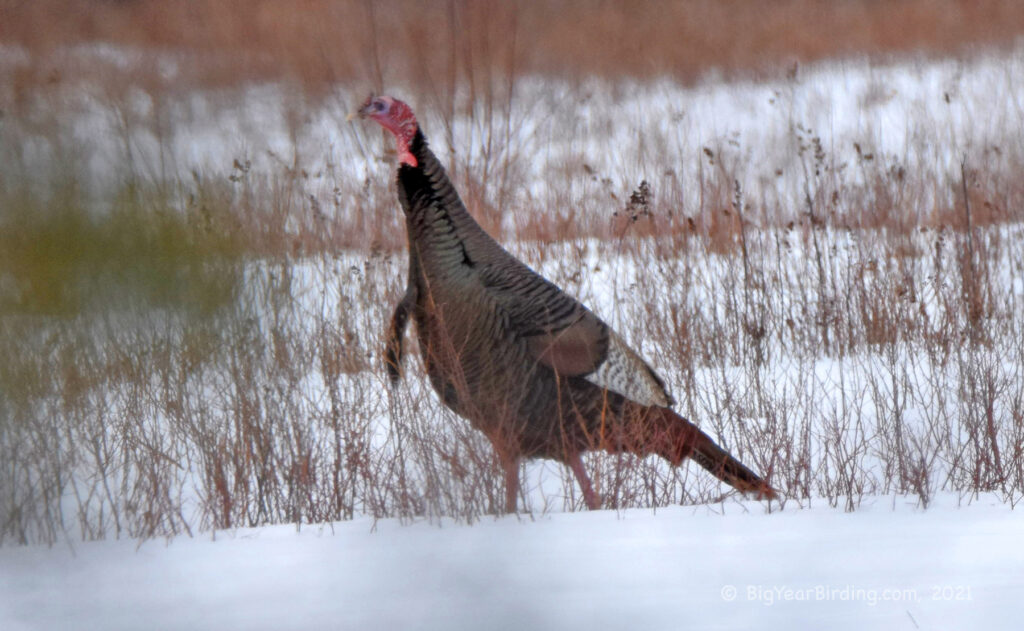
The wild turkey (Meleagris gallopavo) is a large bird native to North America. Adult males, called toms or gobblers, can measure up to 4 feet in length and weigh up to 25 pounds, while adult females, or hens, are typically smaller, measuring up to 3 feet in length and weighing up to 12 pounds. The wild turkey is well-known for its striking plumage, which includes iridescent feathers in shades of green, bronze, and copper, as well as a distinctive featherless head that can change color depending on the bird’s mood.

Distinguishing field marks of the wild turkey include its long, broad tail, which is typically fanned out during courtship displays, as well as its large, curved spurs on the back of its legs. Male wild turkeys also have a characteristic “beard,” a tuft of coarse hair-like feathers that grows from their chests. Additionally, male and female wild turkeys can be distinguished by their vocalizations; males make a gobbling sound, while females make a softer, more nasal clucking noise.
Wild turkeys are generally non-migratory, although they may make seasonal movements in response to changes in food availability or weather conditions. During the winter months, wild turkeys will often congregate in large flocks, while in the spring and summer, males will establish territories and begin courting females. Wild turkeys are found throughout much of North America, with the largest populations found in the eastern United States.

While wild turkeys were once threatened by hunting and habitat loss, conservation efforts have helped to increase their numbers in recent years. Today, wild turkeys are a common sight in many rural and suburban areas, where they can be seen foraging for food in fields and woodlands. Despite their large size, wild turkeys are surprisingly agile and can run, fly, and even swim when necessary to escape danger.

